13.04.2017
A Macedonian inscription in the form of ligature,
written with Cyrillic letters on earthenware vessel from the site Gnyozdovo near
Smolenks. According to Russian archaeologists is believed to be the oldest Cyrillic
inscription, dating from the X century, although by the manner of writing in
the form of ligature and based on the content of the decoded text, in the form
of poem, it is assumed to be much older.
.......................................
Fig. 1 Inscription with Cyrillic
letters engraved into earthenware
from the site Gnyozdovo near Smolenks.
According to Russian archaeologists and from the
analysis of Valery A. Coudinov, published in the Russian Academy of Sciences,
by the Scientific Council for World Culture, a committee on old and medieval
Russian culture, Leninsky Prospect 32, 119991 RU-Moscow GSP-1, Russia, the
inscription contains the following elements.
According to Valery A.C., there were no Cyrillic
alphabet and Cyrillic inscriptions prior to X century on the territory of
present-day Russia. In fact, during that period the Cyrillic alphabet began
appearing together with the Runic. The inscription read in pure Cyrillic by
Russian archaeologists does not contain logical thought. But, according to
Valery A. C., the inscription read in combination of Cyrillic and Runic
syllables gives the following result.
............................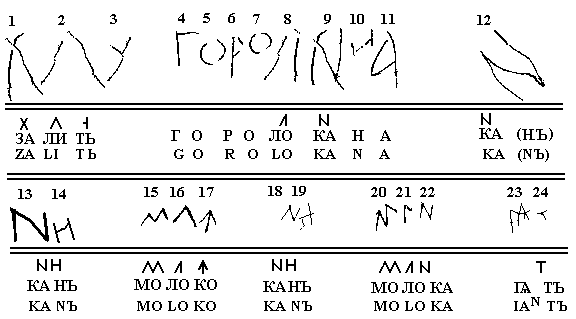
Fig.2 Reading by Valery A. Coudinov.1
In my
opinion, the Macedonians in the history of writing since 500,000 years ago used
the Cyrillic alphabet. In the book Zeta Macedonia 400,000 years of literacy p.22, it is called alphabet (slovarnica) CUTNA (BLOSSOM). The Cyrillic letters
were never used to express thoughts in syllables. The Macedonians, because of
the small writing space, always wrote in the form of ligature and lyrics.
Macedonia texts with the Macedonian BLOSSOM alphabet (Cyrillic) found on five
continents in Macedonian language, prove the fact that Macedonians lived
indigenously on five continents 500,000 years ago.
In the context of
Russian archaeologists who say that the Cyrillic occurred as late as X century,
I point out an example of Cyrillic inscription from Russia.
On the territory of
present-day Russia, according to the book Zeta
Macedonia 400,000 years of literacy, p.257 –called Zeta Macedonia R'zija,
on the Mamutovaja kurja site (Mammoth hut), a mammoth tooth was found 40,000 years old. The
tooth contains the following engraved text:
“The bone with length of 1m
30 cm has scratches 1-2 mm deep and 0.5-1 cm long. A poem is engraved, which is
in Macedonian language and deciphered from right to left, it reads:
“I URALU U TP GORU VR, DOU LT, JS ZHGI TSHT GR, PIR
REA LUT, PS MA, MIL NA IL, LP ST, AL LP” or IN contemporary Macedonian
language:
“AND ON URAL ON BLUNT PEAK
OF THE FORESTS, THE FLIGHT OF SPIRITS IS WITH THE LIVE TEST OF THE FORESTS. PIR
REA ANGRY. RIS ON MA, MILL NA ILI, LEP WHOLE – AL LEP.”[1]
.........................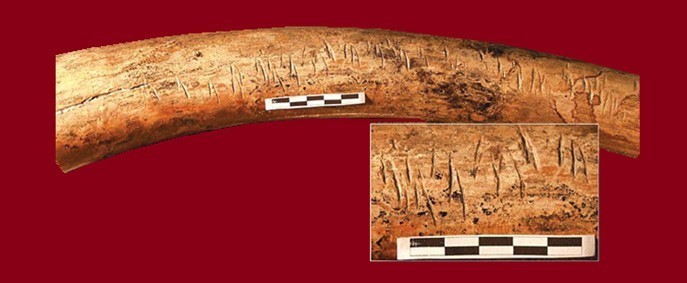
Fig. 33 Mammoth tooth with Macedonian inscription. Mammoth hut on Ural -
Russia.
In the context
of Macedonian mythology, the text can be interpreted as follows:
“AND ON URAL, ON
BLUNT PEAK OF FORESTS. THE SPIRIT FLIES. I AM STILL THE ALIVE FATHER-IN-LAW OF
THE FORESTS. PIR REA ANGRY. DEW OF MADON. CARESSED BY IL. BREAD FOR ALL. LITTLE
BREAD.”
This poem is
part of the Macedonian mythology of the Sun, Cosmos, breed, swarm, kin
Macedonian and Macedonia paradise. Ural Mountain, considered a pyramid, is the
place through which the divine spirit arrives, but also returns to the Sun as
divine spirit Macedon from the old father-in-law. The father-in-law as ruler,
mortal God Macedon on the
Planet Macedonia, after his death still has is divine soul which is
immortal and alive.
The
Macedonian people have lived in the territory of present-day Russia for
thousands of years. Their presence is witnessed by countless Cyrillic
inscriptions, as well as folk costumes, the culture of living and faith
continuing until today.
...................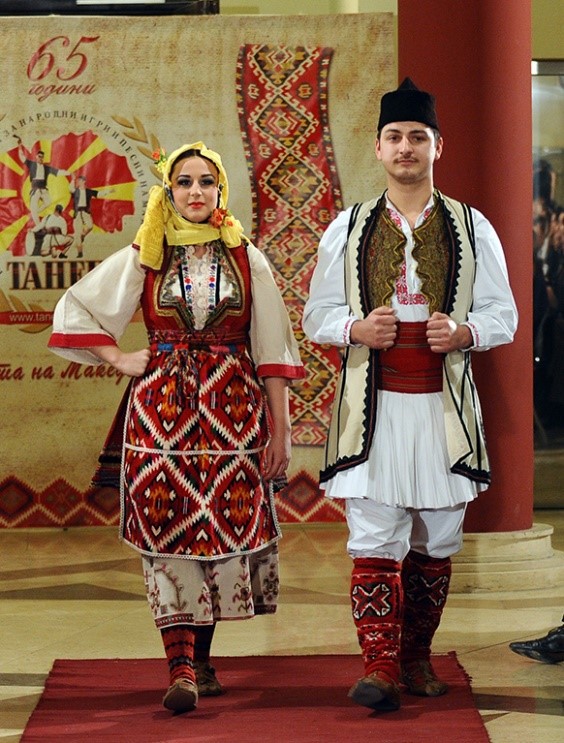
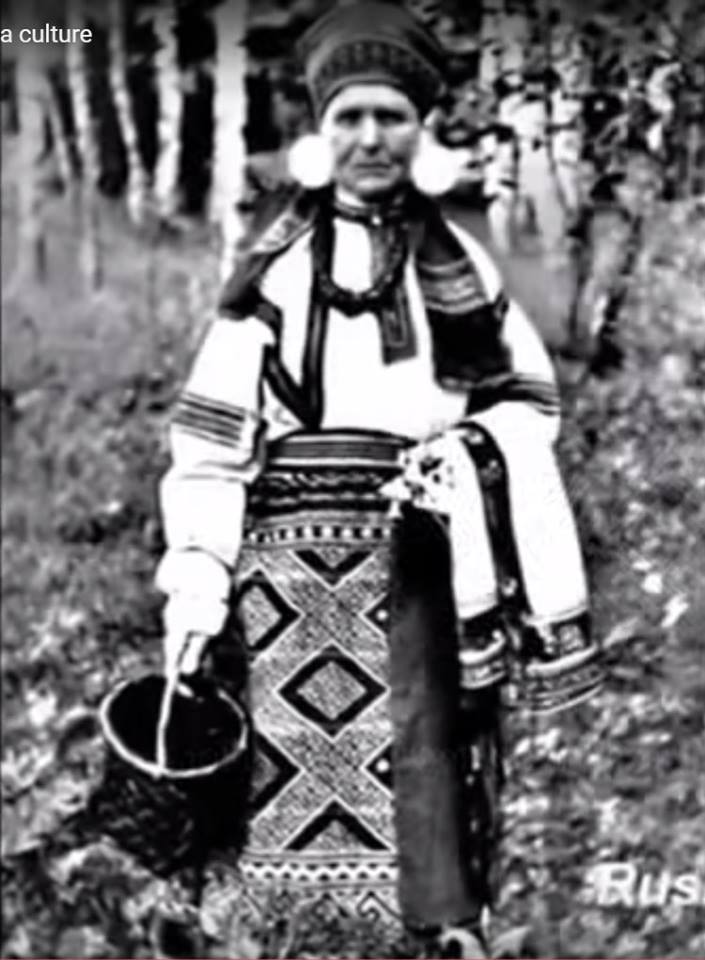
Fig. 4 Macedonian folk costumes from
Macedonia. Fig. 5 Macedonian folk costumes from Russia.
As
for the inscription from the Gnyozdovo site near Smolenks, according to my
interpretation, the clay bowl can be read as:
„ЅНЅА НИТК’ТА,
ГОРО ЛИ, НАША, МАКМ’Д’Н НА ИЛ“.
“DZNDZA
NITK’TA, GORO LI, NASHA, MAKM’D’N NA IL”.
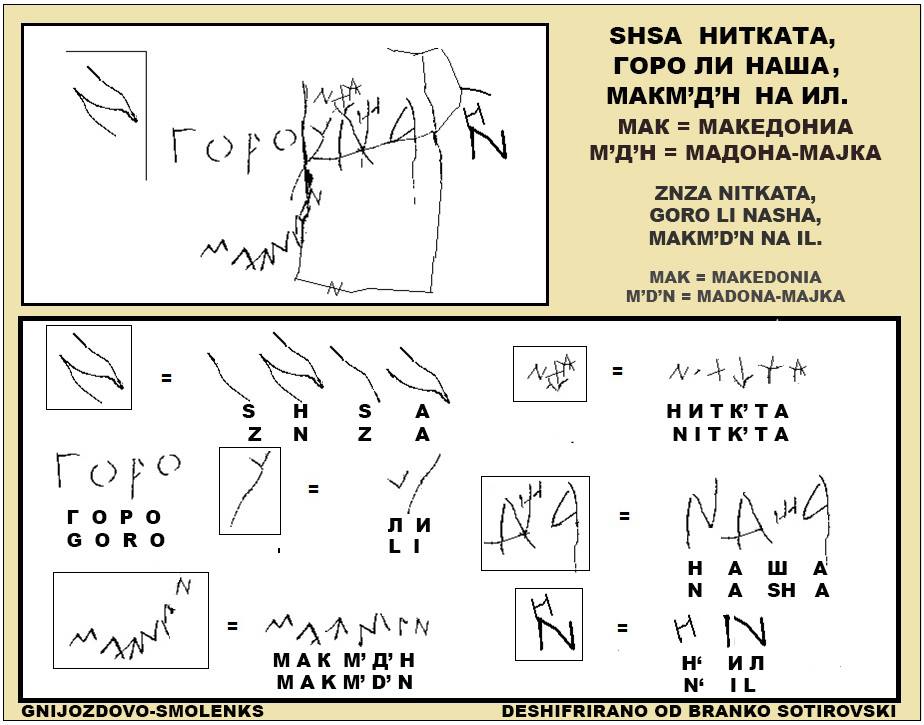
Fig. 6 Deciphered text.
Transcribed into contemporary Macedonian language it reads:
“ЅНЅА НИТКАТА, ГОРО ЛИ НАША, НАД МАКЕДОНИА МАДОНА-МАЈКАТА НА ИЛ“.
(“DZNDZA NITKATA, GORO LI NASHA,
NAD MAKEDONIA MADONA-MAJKATA NA IL”)
(“TINKLES THE THREAD, OUR FORREST, OVER MACEDONIA
MADONA-MOTHER OF IL”)
The verb form “ЅНЅА” ("DZNDZA") is a term
still used in Macedonia, meaning: slow motion. The particle “LI” is unchanging
word attached to other words to reinforce or change their meaning or the
meaning of the whole sentence.
The noun “MAK” is abbreviation of Macedonia, the noun
M'D'N-Madon means mother, donor mistress. The noun “IL” is a noun of the
Macedonian Sun God IL, ILI, ILIJA (Elijah).
The text clearly presents the Macedonian faith of the truth, faith in the Great mother Makedonka-Madona,
birth-giver of Sun God IL, ILI, ILIJA. It is the faith of the Macedonian
people, today called Russians, with their own science, script, language and
Macedonian faith from 500,000 years ago continuation until today.
The book Zeta Macedonia is printed in a second,
supplemented edition and in English translation, which can be read at the City
Library “Brakja Miladinovci”, the National and University Library “Ss. Kliment
Ohridski” – Skopje, in the national libraries in Berlin, Zagreb, Budapest,
Ankara, Hong-Kong – 香港 etc. It is not sold in retail. It can be bought from the author at
zetamakedonija21@gmail.com or phone +389 78 264 106.
There
is a great interest in the English translation of the book Zeta Macedonia. The great interest is due to the fear of
discovering their false history, regarding their own Macedonian origin.
[1] http://www.korenine.si/zborniki/zbornik03/cudinov_runica.htm
[2] Announced in a TV morning show by Vasil Iljov (who deciphered the text) at the start of 2009. The show is uploaded on YouTube channel.
[1] http://donsmaps.com/kurya.html, пристапено на 25.05.2014